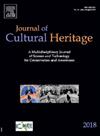Accelerated ageing test (Oddy test) of additive manufacturing materials for cultural heritage use
IF 3.3
2区 综合性期刊
0 ARCHAEOLOGY
引用次数: 0
Abstract
Restoring missing parts of cultural heritage (CH) objects, such as sculptures, archaeological artefacts, or decorative arts, typically marks the final phase in the conservation process. During this treatment, conservators rely on materials known for their ageing properties and lack of adverse effects on the historical item. As technology progresses, new methods and techniques emerge, including additive manufacturing (AM), which has been employed in CH restoration since the early 2010s. However, questions within the CH conservation community have arisen about the suitability of AM materials for this purpose.
This paper outlines the process and presents the outcomes of an accelerated ageing test on collected ceramic, ceramic-like, glass-like, paper-based and polymer AM materials. The Oddy test results suggest that some commercially available AM materials are suitable for conservation use. However, inconsistent results across different labs highlight concerns about the reliability and consistency of Oddy testing. This procedure is an integral part of a doctoral research project focused on the use of additive manufacturing method to restore ceramic and glass archaeological artefacts. This research could benefit conservators of antiquities and works of art, museum curators and material scientists who would like to use the additive manufacturing method as a complementary restoration method for their conservation process or museum curation.
文物增材制造材料加速老化试验(Oddy试验
修复文化遗产(CH)物品缺失的部分,如雕塑、考古文物或装饰艺术,通常标志着保护过程的最后阶段。在这种处理过程中,保护人员依赖于已知的具有老化特性和对历史物品没有不利影响的材料。随着技术的进步,新的方法和技术出现了,包括增材制造(AM),自2010年代初以来一直用于CH修复。然而,在CH保护界已经出现了关于AM材料用于此目的的适用性的问题。本文概述了该过程,并介绍了对收集的陶瓷、类陶瓷、类玻璃、纸基和聚合物增材制造材料进行加速老化试验的结果。Oddy测试结果表明,一些市售增材制造材料适合保护使用。然而,不同实验室不一致的结果突出了对Oddy测试的可靠性和一致性的关注。该程序是博士研究项目的一个组成部分,该项目专注于使用增材制造方法修复陶瓷和玻璃考古文物。这项研究可以使文物和艺术品的保护者、博物馆馆长和材料科学家受益,他们希望将增材制造方法作为他们的保护过程或博物馆策展的补充修复方法。
本文章由计算机程序翻译,如有差异,请以英文原文为准。
求助全文
约1分钟内获得全文
求助全文
来源期刊

Journal of Cultural Heritage
综合性期刊-材料科学:综合
CiteScore
6.80
自引率
9.70%
发文量
166
审稿时长
52 days
期刊介绍:
The Journal of Cultural Heritage publishes original papers which comprise previously unpublished data and present innovative methods concerning all aspects of science and technology of cultural heritage as well as interpretation and theoretical issues related to preservation.
 求助内容:
求助内容: 应助结果提醒方式:
应助结果提醒方式:


